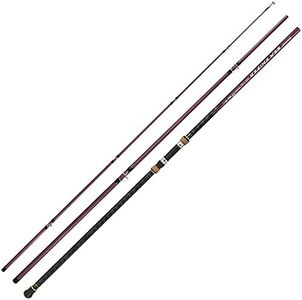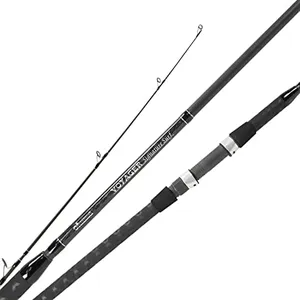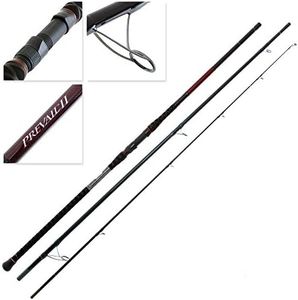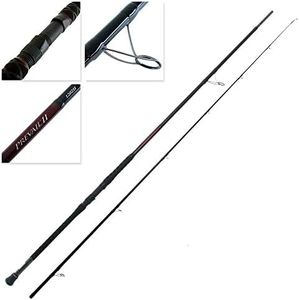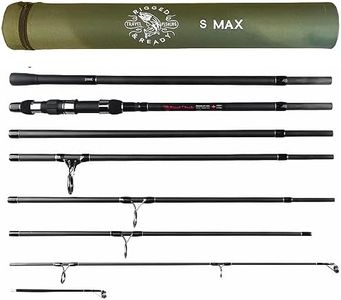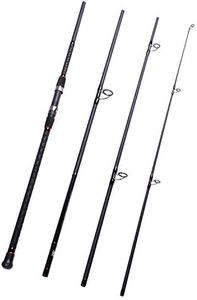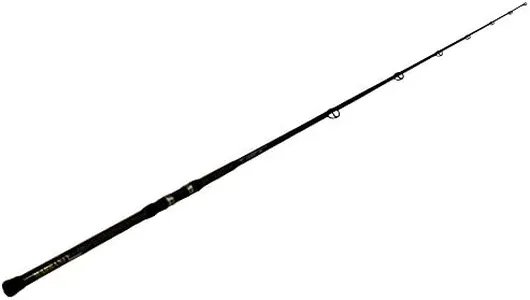We Use CookiesWe use cookies to enhance the security, performance,
functionality and for analytical and promotional activities. By continuing to browse this site you
are agreeing to our privacy policy
10 Best Surf Fishing Rods
From leading brands and best sellers available on the web.By clicking on a link to a third party's website, log data is shared with that third party.
Buying Guide for the Best Surf Fishing Rods
Choosing a surf fishing rod is all about matching your fishing environment and style to the rod’s features. Surf fishing rods are designed for casting long distances into the ocean and handling larger fish, but different rods are tailored for different surf conditions, target species, and casting techniques. Understanding the key specs will help you make a more confident and successful purchase.Rod LengthRod length is the measurement from the butt of the handle to the tip of the rod. Surf fishing rods can range widely, but most are between 9 and 15 feet. The length is important because a longer rod allows you to cast farther, which is useful when you need to reach fish beyond the breaking waves. Shorter rods are easier to handle and transport and can offer more control in close combat with fish. If you plan to fish from the shore and need distance, a rod 10-12 feet is a good all-around length; for extreme casting distances, consider rods upwards of 12 feet. For ease of use and closer casts, a 9-10 foot rod may fit best.
Rod PowerRod power refers to the amount of force needed to bend the rod, which impacts the size of the fish it can handle and how heavy a weight you can cast. Power ranges from light to heavy. Light and medium power rods are good if you’re targeting smaller species or using lighter tackle, while medium-heavy to heavy power rods are necessary for bigger fish, strong currents, or heavier baits. Choose a power level based on the type of fish you expect and the conditions you’ll be fishing in. For most surf fishing targeting a variety of species, a medium-heavy power is a versatile choice.
Rod ActionRod action describes where the rod bends when pressure is applied. Fast action rods bend mostly at the tip, offering quick hook-setting and more sensitivity, while slower actions bend deeper into the blank and provide a smoother, more forgiving bend. For surf fishing, moderate to fast action rods are common, as they offer a balance between casting distance and control when fighting a fish. If you need longer casts and plan to use heavier baits, a moderate action helps load the rod for distance. For quick reactions and precise casting, fast action serves well.
MaterialSurf fishing rods are made from different materials, generally graphite (carbon fiber), fiberglass, or a blend of both. Graphite rods are lighter and more sensitive, making them good for feeling light bites and casting long distances, but they may be more brittle. Fiberglass rods are heavier but offer more durability and a parabolic bend, making them suitable for battling hard-fighting fish. Blended rods try to balance strength, sensitivity, and durability. If you value sensitivity and lightness, go for graphite; if you want toughness and are rough on your gear, fiberglass or blends may suit you.
Line and Lure RatingThese ratings tell you the range of fishing line strength (measured in pounds) and lure or sinker weight (measured in ounces) the rod is designed to handle. It’s important to match these ratings to your intended tackle and target fish. Heavier ratings allow you to use bigger weights and lines, suited for larger fish and rough surf. If you mostly use lighter tackle for smaller fish, opt for lower line and lure ratings for better casting feel. Always check these specs to ensure your fishing setup is balanced and safe.
Handle Type and GripThe handle type and grip material affect comfort and control during long casting or battling fish. Handles are often made from EVA foam or cork for comfort and grip, even when wet. Some rods have longer handles for two-handed casting, which is helpful in surf fishing for greater leverage and distance. Pick a grip that feels comfortable and secure in your hands, especially if you plan to spend long hours fishing or have wet, sandy conditions.
Number of PiecesSurf rods can be one-piece or multi-piece (usually two or three). One-piece rods usually offer better sensitivity and strength, while multi-piece rods are easier to transport and store. If you travel often or need to pack your rod in a car or suitcase, a multi-piece rod might be best. If you prioritize performance and don’t mind transporting a longer rod, a one-piece option could be ideal.
